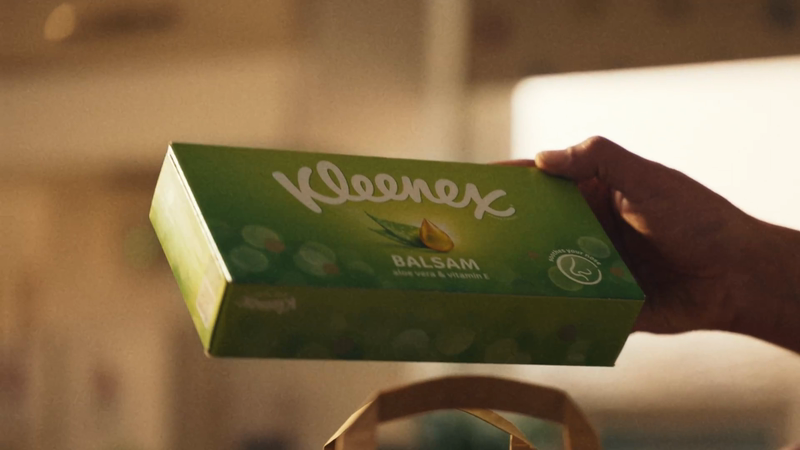
Finely Sliced: Why Timing Is Crucial with Leo King

Multi-award-winning editor, and Stitch co-founder, Leo King talks to us about the highs and lows of leadership, and how his experiences have shaped his approach to running one of the industry’s most successful edit houses. Since founding Stitch, Leo has picked up Clio, Ciclope and Creative Circle wins, with the company also seeing multiple successes at Cannes and the British Arrows. Under his tenure, Stitch has grown to a roster of fourteen editors, becoming one of the most prominent edit houses in the country.
LBB>The first cut is the deepest: how do you like to start an editing project?
Leo> I think timing is crucial when starting a project. I like to chat to directors right at the beginning, at the point at which they’re writing their treatment. This allows me to contribute any ideas I may have upfront, hopefully leading to a better film in the long run.
LBB> Non-editors often think of editing just in technical terms but it’s integral to the emotion and mood of a film. How did you develop that side of your craft?
Leo> For me, Editing is very much more than a technical job, and it’s amazing how the smallest change of performance or shot can change the entire mood of the piece. The same footage can be broad and jokey or subtle and nuanced, depending on the music, performance, or a myriad of other factors. So, it’s crucial to understand the tone of the piece you’re cutting. In terms of developing my knowledge, part of it is gut instinct, and what you think is right for the edit. However, it’s also a learned skill, and confidence comes from working on lots of projects to build up understanding.
LBB> Rhythm and a sense of musicality seem to be intrinsic to good editing (even when it’s a film without actual music) – how do you think about the rhythm side of editing, how do you feel out the beats of a scene or a spot? And do you like to cut to music?
Leo> Rhythm and flow are vital to creating a good spot. I have a somewhat musical background having played bass growing up, so that’s absolutely helped when trying to find the beats in both music video and commercial editing. That being said, I’ve always been keen on a spot having its own rhythm, rather than cutting slavishly to the track provided. Often, I’ll cut a film with one track for most of the project, then try some other tracks towards the end. If most of those work too, I take that as a sign that it flows well in its own right.
LBB> Tell us about a recent editing project that involved some interesting creative challenges.
Leo> My recent spot for Warburton’s ‘Mad About Bread’ with Samuel L Jackson was a great example of overcoming creative challenges. Whilst the four adverts I’ve cut for Warburton’s have had similarities, namely being massive jobs with big stars and big budgets, they have each presented their own challenges. The director, Declan Lowney, likes me to cut on set, so for this spot I was selecting and cutting live footage as they were shooting. This means having to work closely with Declan and make my suggestions, all the while there is a tight shoot schedule and talent waiting on our decisions. This is so beneficial when it comes to the edit suite however, as working so closely together often means you’ve ironed out a few of the usual problems before even leaving set.
LBB> How important is your relationship with the director and how do you approach difficult conversations when there is a creative difference of opinion?
Leo> The relationship I have with my directors is vital to the success of the job. I think the ability to work collaboratively is the key ingredient to what makes any project great. I have to be able share my interpretations, while staying close to the director’s vision for the project. While you must sometimes pick your battles as an editor, adopting this approach means I can have the best of both worlds, combining our strengths to get the best possible result.
LBB> What’s harder to cut around – too much material or not enough? (And why?)
Leo> In my experience, it’s harder to cut a project when there’s not enough material rather than too much. Starting out in our careers, we all get used to limited resources when cutting music videos or low budget commercials. However, having to use every last frame to try and pull a cut together can be an exhausting process, as well as compromising the quality of the project. While lots of film is overwhelming occasionally, I’d still pick that every time as it just gives you much more choice!
LBB> There are so many different platforms for film content now, and even in advertising something can last anything from a few seconds to a couple of hours. As an editor, are you seeing a change in the kind of projects you’re getting from brands and agencies?
Leo> I think one significant change we’ve noticed as a business is the change towards shorter, social media specific content. In the past, this may have been an afterthought, with content filmed separately. Now though, it’s a key feature of most projects we work on. For example, there will often be an additional day of filming for social content, which is really beneficial as it means the entire project is under one roof. This ensures that all my cuts, from the main advert to six second cutdowns, feel a part of one wider campaign.















